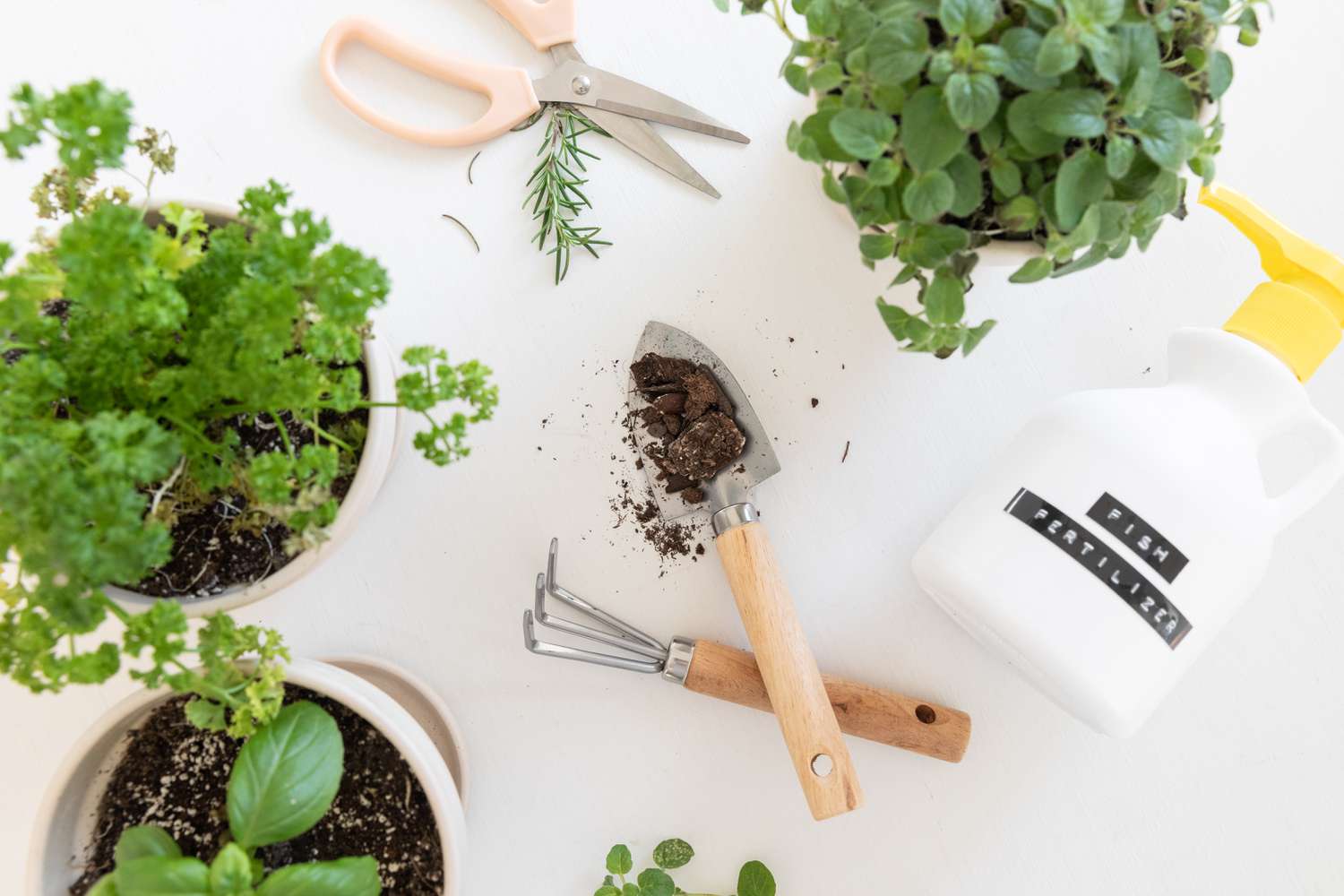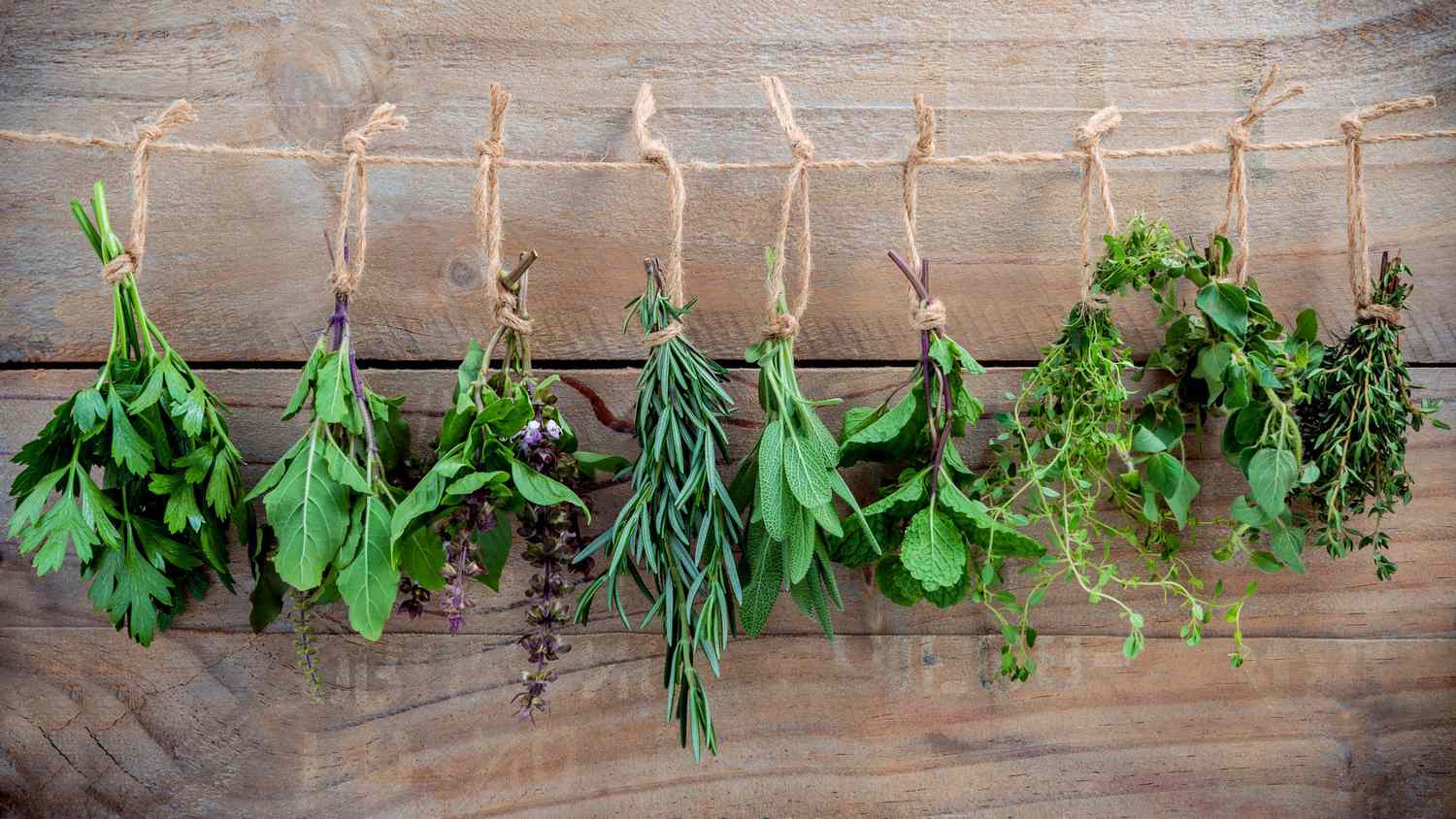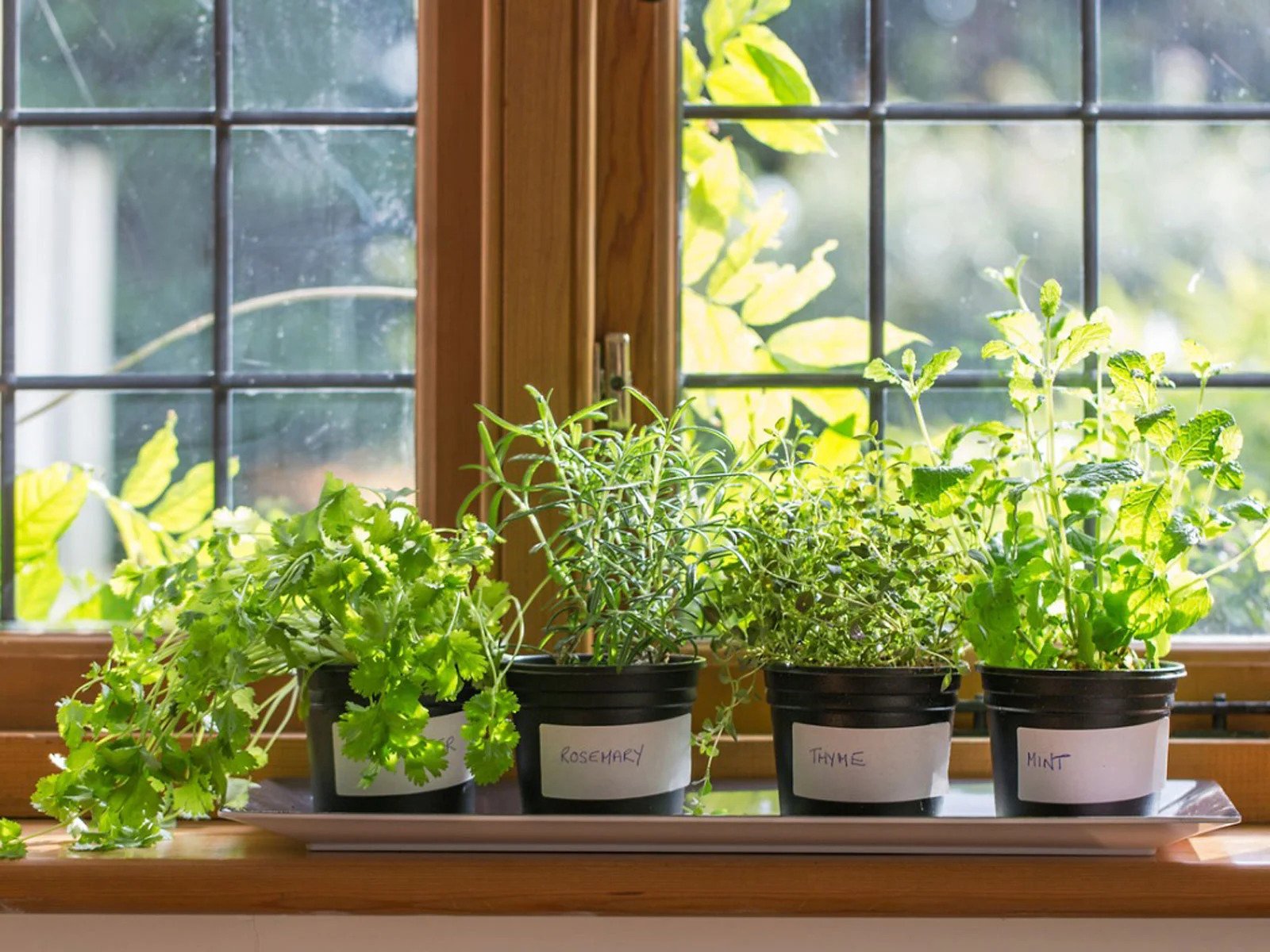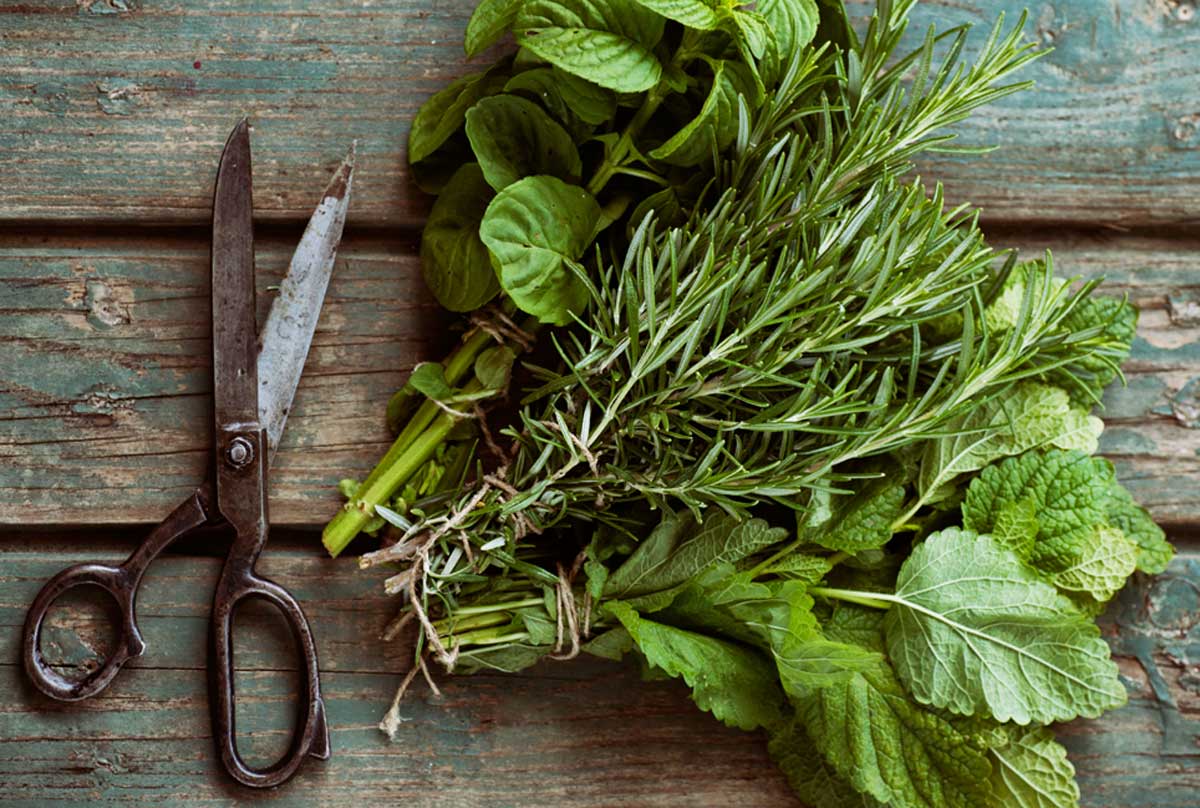Home>Gardening Tips and Tricks>Maximizing Yield>How To Fertilize Herbs


Maximizing Yield
How To Fertilize Herbs
Modified: February 9, 2024
Learn how to maximize your herb yield with our expert tips on fertilizing herbs. Increase the growth and potency of your plants for a bountiful harvest.
(Many of the links in this article redirect to a specific reviewed product. Your purchase of these products through affiliate links helps to generate commission for Chicagolandgardening.com, at no extra cost. Learn more)
Table of Contents
Introduction
Welcome to the world of herb gardening! Growing herbs can be a rewarding and fulfilling experience, whether you have a spacious outdoor garden or a small kitchen windowsill. To ensure your herbs thrive and yield an abundance of flavorful leaves and aromatic spices, it is important to provide them with proper care, including regular fertilization.
Herbs have specific nutrient requirements that differ from other plants, and by understanding these needs, you can maximize their growth and optimize their flavor profiles. Fertilizing your herbs is the key to unlocking their full potential and enhancing their yield, making them even more delicious and appealing.
In this article, we will explore the various aspects of fertilizing herbs, starting from soil preparation to choosing the right fertilizers, and understanding the nutrient needs of different herbs. We will also provide practical tips on when and how to fertilize your herbs, as well as common mistakes to avoid. By the end, you will have the knowledge and confidence to cultivate a thriving herb garden that produces an abundance of culinary delights.
Soil Preparation
One of the most critical factors for successful herb cultivation is the quality of the soil. Before you start fertilizing your herbs, it is crucial to prepare the soil properly to create an optimal growing environment. Here are the steps involved in soil preparation:
- Testing the soil: Begin by testing the pH level of your soil to determine its acidity or alkalinity. Most herbs prefer a slightly acidic to neutral soil pH ranging from 6.0 to 7.5. You can use a soil testing kit available at garden centers or send a sample to a professional lab for analysis.
- Amending the soil: Once you know the pH level of your soil, you may need to amend it to create the perfect growing conditions for your herbs. If the soil is too acidic, you can add lime to raise the pH. On the other hand, if the soil is too alkaline, you can add sulfur to lower the pH. It is essential to follow the recommended dosage and amend the soil well in advance before planting your herbs.
- Improving soil structure: Herbs thrive in well-draining soil that retains moisture without becoming waterlogged. If your soil has poor drainage, you can improve its structure by adding organic matter such as compost, aged manure, or coconut coir. These amendments will help the soil retain moisture while preventing it from becoming compacted.
- Removing weeds and debris: Before planting your herbs, ensure that the soil is free from weeds and debris that may compete for nutrients and hinder the growth of your herbs. Remove any grass, weeds, or rocks, and cultivate the soil with a garden fork or tiller to loosen it further.
Proper soil preparation sets the stage for successful herb cultivation by providing an ideal foundation for healthy root development and nutrient uptake. Take the time to prepare your soil, and you will reap the rewards with a vibrant and productive herb garden.
Choosing the Right Fertilizer
When it comes to fertilizing your herbs, selecting the right type and formula of fertilizer is crucial. The ideal fertilizer will provide the necessary nutrients that herbs need for healthy growth and development. Here are a few factors to consider when choosing the right fertilizer for your herbs:
- Nutrient content: Look for fertilizers that have a balanced nutrient ratio, such as a 10-10-10 or 14-14-14 formula. These numbers represent the percentage of nitrogen (N), phosphorus (P), and potassium (K) in the fertilizer, respectively. Nitrogen promotes leafy growth, phosphorus supports root development and flower production, and potassium enhances overall plant health and disease resistance. A balanced fertilizer ensures that your herbs receive all the essential nutrients they need.
- Organic vs. synthetic: Consider whether you want to use organic or synthetic fertilizers. Organic fertilizers are derived from natural sources, such as compost, manure, or fish emulsion. They are slow-release and provide a steady supply of nutrients over time. Synthetic fertilizers, on the other hand, are chemically formulated and deliver nutrients more quickly. Both types have their advantages, so choose the one that aligns with your gardening preferences and values.
- Slow-release vs. water-soluble: Fertilizers come in different forms, including slow-release granules or pellets and water-soluble powders or liquids. Slow-release fertilizers are convenient as they gradually release nutrients over a specified period, reducing the risk of over-fertilization. Water-soluble fertilizers are faster-acting and are often used as foliar sprays or during the growing season to give your herbs a quick nutrient boost. Consider your preferred method of application when selecting the fertilizer type.
- Specialized herb fertilizers: Some manufacturers offer specialized fertilizers formulated specifically for herbs. These products take into account the unique nutrient needs of herbs, providing a tailored blend of nutrients that promote vigorous growth and enhance flavor. Look for herb-specific fertilizers if you want to take your herb gardening to the next level.
Remember, no matter which fertilizer you choose, always follow the package instructions for proper application rates and frequencies. Choosing the right fertilizer will nourish your herbs and contribute to their overall health and productivity.
Organic Fertilizers for Herbs
Organic fertilizers are derived from natural sources and are a popular choice among herb gardeners who prefer to use environmentally-friendly and sustainable gardening practices. These fertilizers offer several benefits for your herbs and contribute to the overall health of your garden. Here are a few examples of organic fertilizers suitable for herbs:
- Compost: Compost is a nutrient-rich, organic matter created from the decomposition of various organic materials, such as vegetable scraps, yard waste, and leaves. It improves soil structure, increases water retention, and gradually releases nutrients as it breaks down. To use compost as a fertilizer, spread a layer of compost around the base of your herbs and gently work it into the soil.
- Manure: Well-rotted animal manure, such as cow or chicken manure, is an excellent organic fertilizer option for herbs. Manure adds essential nutrients to the soil and improves its fertility. However, it is important to use composted manure to ensure that any potentially harmful pathogens or weed seeds have been eliminated during the decomposition process. Apply a thin layer of composted manure to the soil surface around your herbs.
- Seaweed and kelp: Seaweed and kelp are rich in trace minerals and nutrients, including potassium, calcium, and magnesium. They can be used as liquid fertilizers or as a foliar spray by steeping dried seaweed or kelp in water. This organic fertilizer provides a quick nutrient boost and helps stimulate growth in your herb plants.
- Fish emulsion: Fish emulsion is a concentrated organic fertilizer made from fish byproducts. It is rich in nitrogen, phosphorus, potassium, and trace minerals. Dilute fish emulsion according to the package instructions and apply it to the soil around your herbs. It is important to note that fish emulsion has a strong smell, so consider applying it during the early morning or evening to minimize any unpleasant odors.
Organic fertilizers nourish your herbs while improving the soil structure and promoting the growth of beneficial microorganisms. They also contribute to the long-term health and sustainability of your garden. Incorporate organic fertilizers into your herb gardening routine, and you will enjoy flavorful and vibrant herbs that are free from synthetic chemicals.
Synthetic Fertilizers for Herbs
Synthetic fertilizers are chemically formulated and provide a concentrated source of nutrients for your herbs. They offer several advantages, such as fast-acting results and precise nutrient ratios. While they are not considered organic, synthetic fertilizers can be an effective option for herb gardeners looking for quick and precise nutrient supplementation. Here are a few examples of synthetic fertilizers suitable for herbs:
- Granular fertilizers: Granular fertilizers are a popular choice for herb gardens as they provide a slow and consistent release of nutrients over time. These pellets or granules are usually coated with a polymer that controls the release of nutrients, making them available to plants gradually. Simply sprinkle the granules around the base of your herbs and water them in.
- Liquid fertilizers: Liquid fertilizers are soluble concentrates that can be easily dissolved in water and applied directly to the soil or foliage of your herbs. They provide a quick nutrient boost and are readily absorbed by the plants. Follow the recommended dilution ratios on the fertilizer label and apply the solution to your herbs during their active growth periods.
- Controlled-release fertilizers: Controlled-release fertilizers are designed to provide a slow and steady release of nutrients over an extended period. These fertilizers are coated with a semi-permeable resin that controls the release of nutrients based on soil temperature and moisture levels. Controlled-release fertilizers are convenient for herb gardeners who prefer a set-it-and-forget-it approach, as they typically only require a single application per growing season.
- Water-soluble fertilizers: Water-soluble fertilizers come in the form of powders or crystals that dissolve readily in water. They are versatile and can be applied directly to the soil or used as a foliar spray. Water-soluble fertilizers are particularly useful if your herbs require a quick nutrient boost or if you want to provide nutrients through foliage absorption.
Synthetic fertilizers can provide a precise balance of essential nutrients for your herbs, resulting in vigorous growth and plentiful yields. However, it is important to carefully follow the application instructions on the fertilizer package to avoid over-fertilization, which can lead to nutrient imbalances or burn the roots of your herbs. Use synthetic fertilizers judiciously and in conjunction with good gardening practices to maximize their benefits for your herbs.
Understanding Nutrient Needs of Herbs
Each herb has specific nutrient requirements to support its growth, health, and flavor development. Understanding the unique needs of your herbs will help you provide them with the appropriate fertilization and ensure their optimal growth. Here are some essential nutrients that herbs generally require:
- Nitrogen (N): Nitrogen is essential for leafy growth and overall plant vigor. Herbs that are primarily grown for their leaves, such as basil or parsley, require higher nitrogen levels. Regular application of a balanced fertilizer with a higher nitrogen ratio will help promote healthy foliage development.
- Phosphorus (P): Phosphorus is crucial for root development, flower production, and seed formation. Herbs like thyme or rosemary, which have a woody stem and produce vibrant flowers, benefit from phosphorus-rich fertilizers. Incorporate a fertilizer with higher phosphorus levels during the early stages of growth to encourage robust root development.
- Potassium (K): Potassium plays a vital role in overall plant health and disease resistance. It helps in the formation of essential oils and enhances the flavor and aroma of herbs. Herbs such as oregano or sage that have strong flavors and intense aromas thrive with a potassium-rich fertilizer. Regularly supplement your herbs with potassium to enhance their quality and taste.
- Secondary nutrients and micronutrients: In addition to nitrogen, phosphorus, and potassium, herbs also require secondary nutrients like calcium, magnesium, and sulfur, as well as micronutrients like iron, zinc, and copper. These nutrients are essential for various metabolic functions and for maintaining overall plant health. Consider using a fertilizer that includes these secondary nutrients and micronutrients to ensure your herbs receive a well-rounded nutrient supply.
It is important to remember that different herbs have varying nutrient requirements based on their growth habits, culinary usage, and natural habitat. Research individual herb species to gain a deeper understanding of their specific nutrient needs. Additionally, monitor your herbs for any signs of nutrient deficiencies, such as yellowing leaves or stunted growth, and adjust your fertilization accordingly.
Providing the right balance of nutrients will support the healthy growth, flavor development, and overall vitality of your herb plants. By understanding the nutrient needs of your herbs, you can tailor your fertilization approach and ensure their successful cultivation.
When and How to Fertilize Herbs
Knowing when and how to fertilize your herbs is essential to ensure they receive the necessary nutrients at the right time. Here are some guidelines to follow:
- Timing: Fertilize your herbs in the early spring, just as new growth begins. This is the time when herbs are actively growing and can benefit the most from nutrient supplementation. Avoid fertilizing too late in the season, as it may encourage late, tender growth that is susceptible to frost damage. If you are growing perennial herbs, you can provide a light application of fertilizer in early fall to support root development before winter dormancy.
- Frequency: Most herbs benefit from monthly or bi-monthly fertilization during the growing season. However, it is important not to over-fertilize, as this can lead to nutrient imbalances or burn the roots. Always follow the package instructions for the specific fertilizer you are using, as application rates may vary.
- Application method: Apply the fertilizer evenly around the base of your herb plants, making sure to keep it a few inches away from the stem to prevent potential root burn. Gently work the fertilizer into the top inch of soil and water thoroughly after application. This helps the nutrients reach the root zone and ensures proper absorption. Alternatively, you can use liquid fertilizers as foliar sprays, applying them directly to the herb leaves, which allows for faster nutrient uptake.
- Watering after fertilization: It is crucial to water your herbs immediately after fertilizing. This helps dissolve the fertilizer and carries the nutrients down to the root zone. Adequate watering also prevents the risk of fertilizer burn and ensures the even distribution of nutrients throughout the soil.
- Observation and adjustment: Monitor your herbs closely for any signs of over-fertilization or nutrient deficiencies. Yellowing leaves, stunted growth, or excessive foliage are indicators of potential nutrient imbalances. Adjust your fertilization schedule and nutrient ratios accordingly to meet the specific needs of your herbs.
Remember, individual herb species may have slightly different fertilization requirements, so research each herb to ensure you are providing the appropriate care. By fertilizing your herbs at the right time and in the proper manner, you will promote healthy growth, robust flavors, and abundant yields.
Tips for Fertilizing Container Herbs
Container gardening offers a convenient and flexible option for growing herbs, especially if you have limited space or lack a traditional garden. Fertilizing container herbs requires some special considerations to ensure their nutrient needs are met effectively. Here are some tips to help you successfully fertilize your container herbs:
- Choose the right potting mix: Select a high-quality, well-draining potting mix specifically formulated for container gardening. Avoid using garden soil, as it may not provide adequate drainage and can contribute to compacted roots. A nutrient-rich potting mix will provide a good foundation for healthy herb growth.
- Use a slow-release fertilizer: Consider using a slow-release fertilizer in your containers that will gradually release nutrients over time. This reduces the risk of over-fertilization and ensures a steady supply of nutrients for your herbs. Simply incorporate the granules into the potting mix according to the package instructions.
- Monitor watering needs: Container herbs generally require more frequent watering compared to herbs planted in the ground. As a result, nutrients can leach out of the soil more quickly. Regularly monitor the moisture levels in the soil and adjust your fertilization schedule accordingly to prevent nutrient deficiencies.
- Apply liquid fertilizers: Liquid fertilizers can be particularly beneficial for container herbs, as they are quickly absorbed by the plants through their roots and foliage. Dilute a water-soluble fertilizer according to the package instructions and use it to water your container herbs. This provides an immediate nutrient boost and helps replenish any nutrients lost through frequent watering.
- Feed more frequently: Container-grown herbs often have limited access to natural sources of nutrients compared to those in the ground. Consequently, they may require more frequent feeding. Adjust your fertilization schedule to every two to three weeks or as recommended for the specific fertilizer you are using.
- Consider foliar feeding: Implement foliar feeding by spraying a diluted liquid fertilizer directly onto the leaves of your container herbs. This method allows for fast nutrient absorption and can be especially beneficial if your herbs show signs of nutrient deficiencies.
- Observe for any issues: Keep a close eye on your container herbs for any signs of nutrient imbalances, such as pale or yellowing leaves, stunted growth, or poor flavor. Adjust your fertilization routine or nutrient ratios accordingly to address and prevent these issues.
Container herbs rely on you for their nutrient supply, so it is important to be attentive and provide them with the necessary care. With proper fertilization and regular monitoring, your container herbs will thrive, providing you with a bountiful harvest of fresh flavors right at your fingertips.
Common Mistakes to Avoid
While fertilizing herbs can greatly benefit their growth and yield, there are common mistakes that herb gardeners should be aware of and avoid. By avoiding these pitfalls, you can ensure that your herbs receive optimal nutrition without any negative consequences. Here are some of the most common mistakes to be mindful of:
- Over-fertilization: One of the most common mistakes is over-fertilizing herbs. Too much fertilizer can lead to nutrient imbalances, root burn, and even plant death. Always follow the recommended application rates and frequencies specified on the fertilizer packaging. Remember that herbs generally have lower nutrient requirements compared to other plants.
- Using the wrong fertilizer: Each herb has unique nutrient requirements, so using the wrong fertilizer can hinder their growth and flavor development. Avoid using high-nitrogen fertilizers on herbs primarily grown for their flowers or culinary leaves. Be sure to select a fertilizer that matches the specific needs of your herbs.
- Ignoring soil quality: Neglecting the quality of the soil can undermine the effectiveness of fertilization. It is important to have well-draining soil with proper organic matter content. Poor soil structure can prevent the roots from absorbing nutrients efficiently. Prioritize soil preparation and work on improving its quality to maximize the benefits of fertilization.
- Failure to test soil: Not testing the soil before fertilizing can lead to nutrient imbalances. Testing the soil’s pH level and nutrient composition helps determine the most suitable fertilizer and application rate. Soil tests are relatively simple and can be done using a kit or by sending a sample to a laboratory for analysis.
- Underestimating watering needs: Proper watering is essential for effective nutrient uptake. Overwatering or underwatering can both hinder nutrient absorption. Ensure that you water your herbs appropriately based on their individual requirements and weather conditions. Adjust the watering schedule as needed to prevent waterlogged or parched soil.
- Not observing signs of plant health: Neglecting to monitor the overall health of your herbs can prevent early detection of nutrient deficiencies or excesses. Regularly inspect your herbs for signs of yellowing leaves, stunted growth, or poor flavor. Adjust your fertilization routine or nutrient ratios accordingly to address any issues promptly.
By avoiding these common mistakes, you can provide your herbs with the right amount and type of fertilizer, ensuring their optimum growth and flavor development. Remember to pay attention to the specific needs of each herb and provide them with well-balanced care to maximize their potential.
Conclusion
Fertilizing your herbs is a crucial aspect of herb gardening that should not be overlooked. By understanding the unique nutrient needs of your herbs and providing them with the appropriate fertilization, you can promote healthy growth, enhance flavor profiles, and maximize their yield. Whether you choose organic or synthetic fertilizers, the key lies in choosing the right type and formula to ensure your herbs receive a balanced supply of essential nutrients.
Proper soil preparation, including testing and amending the soil, creates an ideal growing environment for your herbs. This sets the stage for successful fertilization and encourages optimal nutrient uptake. Timing and frequency are key factors to consider when fertilizing your herbs, ensuring that they receive nutrients when they need them most without overloading them with excessive fertilizers.
While container herb gardening brings its own set of considerations, such as choosing the right potting mix and adjusting fertilization schedules to meet the plants’ needs, it offers the flexibility to grow herbs in small spaces and closer to your kitchen for easy access to fresh flavors.
By avoiding common mistakes, such as over-fertilization, using the wrong fertilizer, or neglecting soil quality, you can ensure that your herbs receive the right balance of nutrients to thrive. Regular observation and monitoring of your herbs will further guide you in making necessary adjustments to your fertilization routine.
In conclusion, fertilizing herbs is a vital practice for maximizing their yield, flavor, and overall health. By nurturing your herbs with the appropriate fertilization and providing them with a suitable growing environment, you can enjoy a plentiful herb garden filled with vibrant colors, aromatic scents, and delectable flavors.









